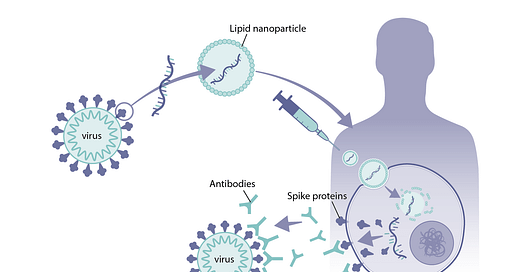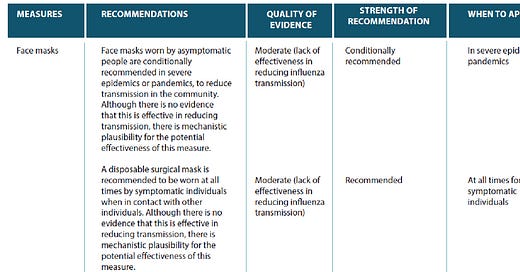
Discover more from Fear of a Microbial Planet
Image: Shutterstock AI
Years ago I was invited to participate in an NIH focus group that sought researchers’ views about funding policies for immunology and infectious disease, which is mostly covered by the National Institute for Allergy and Infectious Disease, or NIAID. When the meeting began, one researcher asked if the outsized levels of HIV funding were because NIAID Director Anthony Fauci’s background was in HIV. Others in the room immediately voiced their assent. Another researcher exclaimed that HIV’s funding dominance was “infuriating” for non-HIV researchers, which included almost everyone in the room. In response, the NIH representative shrugged, “That’s a lobbying issue and we don’t have any control over it.”
In 2019, two billion dollars, over one-third of all NIAID funds, went to HIV research. In the following years, the surge in COVID funding reduced that to one-fourth (although still equaling two billion dollars). As I wrote in Chapter 6 of Fear of a Microbial Planet, HIV/AIDS funding levels do not match the current burden of disease, and haven’t for years:
Hundreds of millions more continue to be spent on public health programs and educational outreach, 40 years after the first cases were identified. This is despite HIV now being essentially a manageable, chronic disease, kept at bay by highly effective anti-retroviral therapies. The gay community that once fought to keep open bathhouses where HIV transmission was rampant, began championing marriage and monogamy, with great success. Meanwhile, the global burdens of diarrheal, respiratory, and tropical diseases continued to dwarf that of HIV and other STDs.
How did HIV funding balloon far beyond the disease threat it posed? Like COVID, the early days of the HIV pandemic were characterized by media and “expert”-driven alarmism. Familiar faces like Robert Redfield, Anthony Fauci, and William Haseltine threw gas on the panic fire with claims of heterosexual and even household transmission. Celebrities jumped on the doom train, too, exemplified by talk show queen Oprah Winfrey’s claim in 1987 that one in five heterosexuals would be dead from AIDS by 1990. This, of course, didn’t even come close to happening. But the mass hysteria had served its purpose. From FMP:
That didn’t matter, because the early hysteria surrounding HIV resulted in the generation of one of the largest and most successful lobbying efforts of all time, an effort so successful it created an industry that became too big to dismantle. HIV researchers continued to be elevated to prominent positions within government and academia, ensuring that the funds would continue even as the HIV pandemic stabilized. Just like with the creation of a massive government agency, the original purpose of the HIV research community was diluted and replaced with the sole motivation to retain and increase money, power, and influence.
This explains why when the COVID pandemic hit in 2020, the three top advisors, Robert Redfield, Anthony Fauci, and Deborah Birx, all had backgrounds in HIV research. They had risen to prominence as a part of the HIV-Industrial Complex which with no other field could compete. More from FMP:
The HIV-Industrial Complex, as I jokingly refer to it, is a funding behemoth that could only be replaced by something much bigger and more urgent, in this case a new institution built around a broad and non-selective virus that wouldn’t just terrify people about sex but would make the very act of breathing in the presence of others suspect. Since some who had promoted or at least permitted unreasonable fears about HIV had been rewarded for their actions, they would take those lessons and follow much of the same playbook for the next big pandemic. Fear-based messaging, exaggeration of risks for low-risk populations, amplification of anecdotes, distortion of statistics and scientific data, and the abandonment of evidenced-based medicine for the appearance of safety--all were front and center for the SARS-CoV-2 pandemic.
From 2020 on, researchers knew COVID was now the most lucrative game in town, which was quickly reflected in published research, with an avalanche of papers that Stanford Professor John Ioannides called “The Covidization of Research,” noting that 3.7% of all science papers published from January 2020 to August 2021 were COVID-related, over 200,000 total. Authors of COVID-articles represented every field, including “fisheries, ornithology, entomology or architecture.” The last holdout, automobile engineering, came through in early 2021.
Since COVID didn’t have the same slow incubation time and 100% fatality rate that early HIV did, a massive sustained COVID-industrial complex was going to be a harder sell, even with all of the hysteria, doom-mongering, and misinformation served up by the media and their preferred “experts.” With the pandemic ending and SARS-COV-2 entering an endemic phase with milder variants, how could officials clamoring for more money, power, and influence keep the gravy train rolling?
The answer to all of their prayers was Long COVID. As I’ve written previously, Long COVID consists of “anything bad that happens after you’ve had COVID.” Since billions of people ultimately got infected, this includes a sizeable number of strange occurrences—even unexplained tooth loss was blamed on COVID. The broad and nebulous definition of Long COVID is compounded by studies that relied on self-reported symptoms, which could (and most certainly did) introduce bias. More importantly, several studies reported that Long COVID symptoms were more associated with the belief in Long COVID and a history of anxiety disorders than any measurable pathology. Any real long-term conditions post-COVID infection that does exist is thus likely hidden behind a larger, belief-driven, nocebo-effected population.
These glaring limitations haven’t stopped the groundbreaking of the Long COVID-Industrial Complex, which was announced by HHS secretary Javier Becerra on July 31st. Not surprisingly, HHS officials eschewed my accurate name for the more official-sounding “Office of Long COVID Research,” created as part of the $1.15 billion 2021 RECOVER initiative. Thus, the cornerstone of the Long COVID-industrial complex has been laid.
With all of that money up for grabs, newly-minted Long COVID researchers will be scrambling to confirm the Long COVID is a nefarious condition that affects as many people as possible, in as many ways as possible. The HHS announcement has already teed up the rationale:
More than 200 symptoms are associated with long COVID, and the condition can cause problems throughout the body, affecting nearly all body systems including the nervous, cardiovascular, gastrointestinal, pulmonary, autonomic, and immune systems.
This says a lot more about the RECOVER initiative than it does about Long COVID. If everything can be blamed on Long COVID, then nothing can be blamed on Long COVID. It’s all confirmation studies from here on out. But since the COVID pandemic has ended and HIV continues to threaten at-risk populations without access to medicine, the actual need for HIV research will remain greater, while concerns about Long COVID among the public will fade. Just don’t tell that to HHS officials. They don’t want to hear it, because they are determined to build a Long COVID-Industrial Complex that, like it’s HIV-associated predecessor, is too big to fail.
Subscribe to Fear of a Microbial Planet
Fighting back against a germophobic safety culture.















I have commented elsewhere that there is such a thing as post-viral syndrome, which may explain some of the so-called Long Covid. But even before reading this, I've thought that another explanation for this phenomenon is due to many researchers embracing it to the point of positively salivating at the thought of obtaining research funding for its study. I meant world-over, not specifically the US. They obsess about disease as well, so welcome its prevalence. But till this piece, I wasn't aware of the background you highlighted with these US agencies. There may already be cures for HIV that are inexpensive and without side effects, Pharma would no doubt try to suppress information about them.
Thought-provoking.
In the UK, in the early 1980's, there were ghoulish HIV "ads" on the television, and posters everywhere (of the kind we've seen a lot recently). Was this an early manifestation of the role that "behavioural science" plays in influencing us nowadays?
I knew at the time one person with HIV, probably acquired from needle-sharing. I still have a cardigan he gave me. Nowadays I know quite a few 80+ year-old gay men with HIV. Their energy puts me to shame. Mind you, they're on a daunting daily intake of pills.